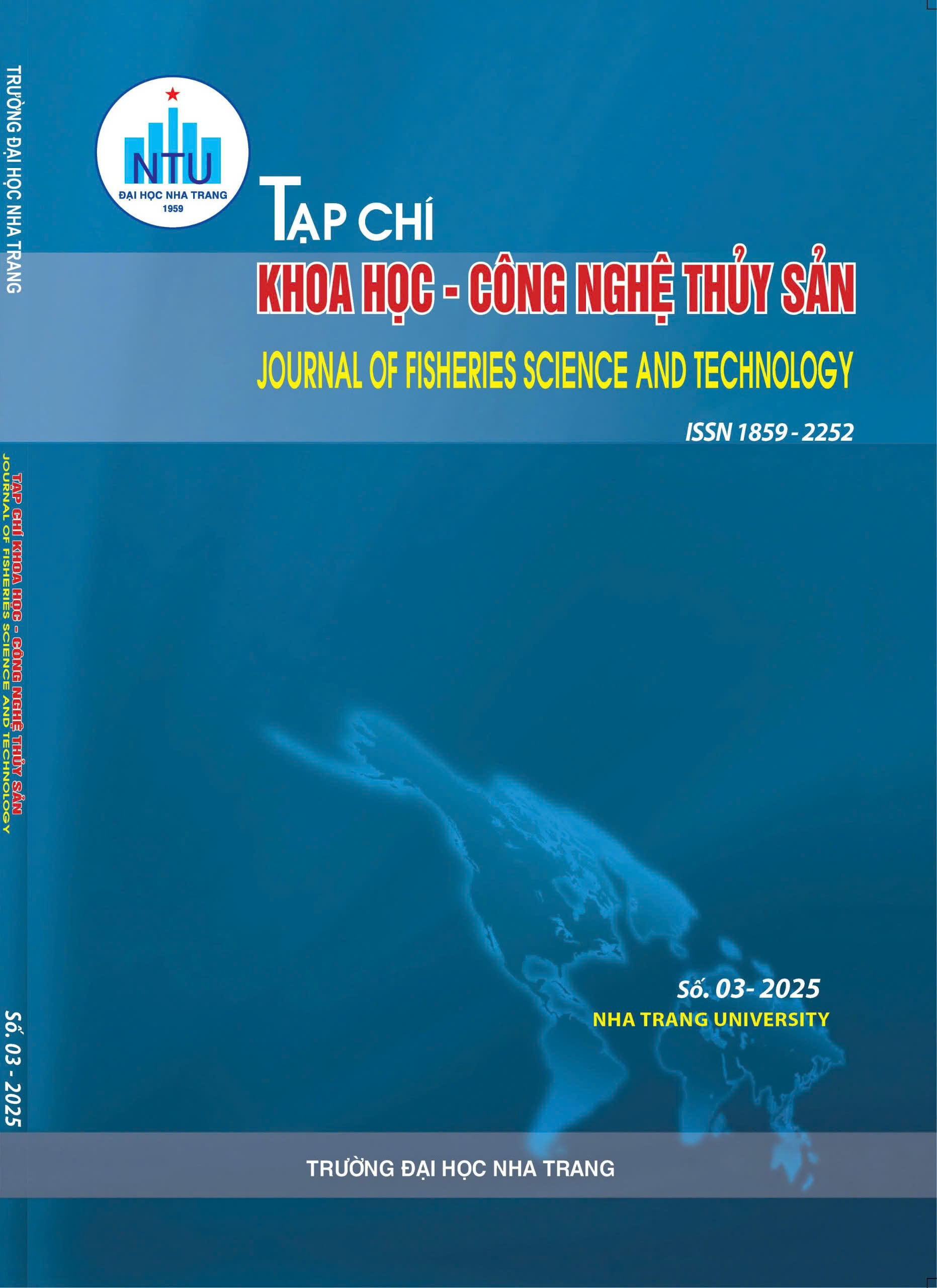##plugins.themes.huaf_theme.article.main##
Abstract
To determine the best substrates and the best food for winged pearl oyster (Pteria penguin Roding, 1798) larvae, contributing to the improvement of the rearing process, two experiments were conducted in 100- liter composite tanks. The feeding density of algae was from 15,000 cells/ml to 30,000 cells/ml. Each experiment had four treatments, replicated four times and lengthened in 20 days. Experiment 1 consisted of four mixed algae feed treatments: TA1 (Nannochloropsis oculata and Isochrysis galbana at a ratio of 1:1), TA2 (N. oculata and Chaetoceros gracilis at a ratio of 1:1), TA3 (I. galbana and C. gracilis at a ratio of 1:1), TA4 (N. oculata, I. galbana and C. gracilis at a ratio of 1:1:1). The initial density of pediveliger larvae was 3 larvae/ ml. The result showed that the larval averaged growth, settlement rate and survival rate of TA4 treatment were highest, corresponding to 1210 µm/ individual, 48.7% and 28.7% respectively. Experiment 2 has 4 different types of substrates: VB 1 (Orchid nets), VB 2 (Plastic sheets), VB 3 (Dead corals) and VB 4 (Ropes). Larvae were fed like TA4 twice a day. The result showed that the larval averaged growth, settlement rate and survival rate of VB 1 (Orchid nets) treatment obtained the best performance corresponding to 1128.4 µm/individual, 48.6% and 28.6% , respectively.
Key words: Spat stage, winged pearl oyster, substrates

